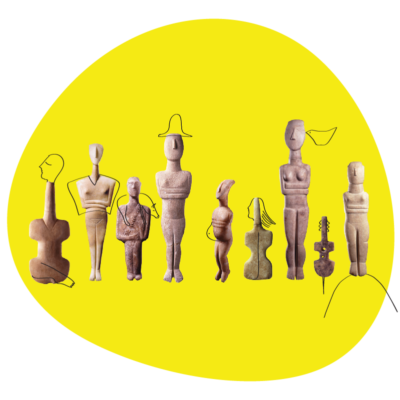What were these figurines after all?

Cycladic Figurines
These small marble statues depicting the human form—the figurines or idols as archaeologists call them—are objects that best represent the art of the Cycladic Civilization. The Greek term “ειδώλιο” derives from the word “είδωλο” ([idolo]=ομοίωμα or likeness); consequently, the English derivative “idol” means effigy, image, model. During the approximately one thousand years (3200-2000 BC) that the Early Cycladic Civilization lasted, various types of figurines were created, sometimes with more and other times with less sculptural detail.
What were these figurines after all?
We’ll never know for sure why the ancient Cycladic people made figurines. Because we do not have written documentation from this distant era, today we try to understand their meaning by studying the figurines themselves but also the place where they were discovered along with the other objects that were found with them.

Figurines and religion
Although we do not know which gods were worshipped by the ancient inhabitants of the Cyclades, archaeological evidence points to the hypothesis that they worshipped the “Great Mother Goddess,” associated with fertility, both in humans and in nature.

The secrets of Keros
On Keros, a small island between Naxos and Amorgos, a great number of broken figurines were found deposited together, along with clay and marble vessels. It can be presumed that all these objects did not just happen to break but were deliberately smashed for religious reasons.
Why do most of the figurines represent female figures?
➜ Because they were related to fertility
➜ Because they represented the “Great Mother Goddess”
Why are their arms folded?
➜ They are praying
➜ Because in this shape they were easier to make and less likely to break
Why are they standing on the tips of their toes?
➜ They are trying to reach something
➜ They are dancing
➜ They were lying down or leaning against something
Why are they often found in graves?
➜ To keep the dead company
➜ To serve the dead
➜ To protect the dead
➜ Because they were the beloved objects of the dead





